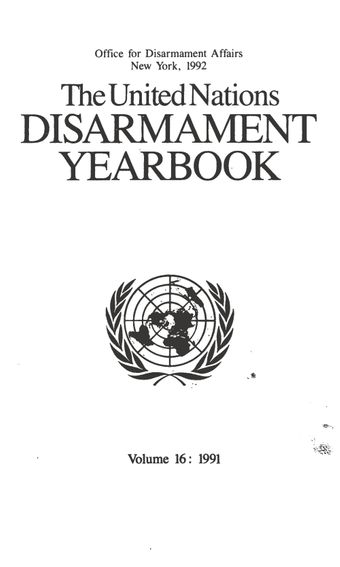Non-Proliferation of nuclear weapons

- Author: United Nations Office for Disarmament Affairs
- Main Title: United Nations Disarmament Yearbook 1991 , pp 185-201
- Publication Date: December 1991
- DOI: https://doi.org/10.18356/2d826c6c-en
- Language: English
The treaty on the non-proliferation of nuclear weapons, commonly referred to as the non-proliferation Treaty or NET, is considered to be one of the first major arms control agreements and a fundamental instrument for preventing the spread of nuclear weapons. Upon ratification by 40 non-nuclear-weapon States, it entered into force on 5 March 1970. The Treaty is the basic legislative authority underlying a global non-proliferation regime. That regime is supported by the safeguards system of the International Atomic Energy Agency (IAEA), which operates to prevent the diversion of nuclear materials to military or other prohibited activities. The system must be accepted by all non-nuclear-weapon States parties to the Treaty. Under article VIII of the Treaty, four conferences have been held to review its operation: in 1975, 1980, 1985 and 1990. Under article X, a conference is to be held 25 years after its entry into force, to decide whether it shall continue in force indefinitely or shall be extended for an additional fixed period or periods.
© United Nations
ISBN (PDF):
9789210579957
Book DOI:
https://doi.org/10.18356/d46ad216-en
Related Subject(s):
Disarmament
Sustainable Development Goals:
-
From This Site
/content/books/9789210579957s003-c004dcterms_title,dcterms_subject,pub_keyword-contentType:Journal -contentType:Contributor -contentType:Concept -contentType:Institution105
/content/books/9789210579957s003-c004
dcterms_title,dcterms_subject,pub_keyword
-contentType:Journal -contentType:Contributor -contentType:Concept -contentType:Institution
10
5

